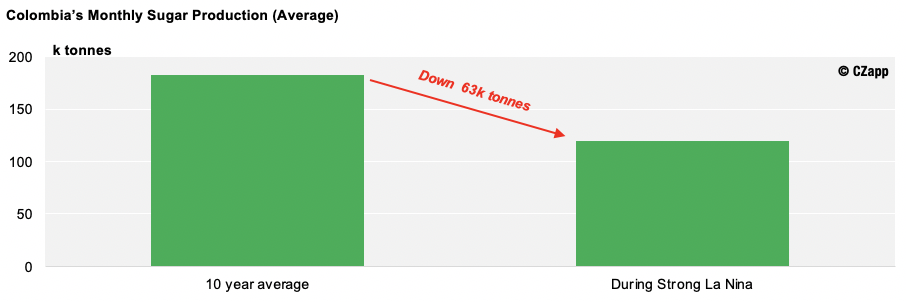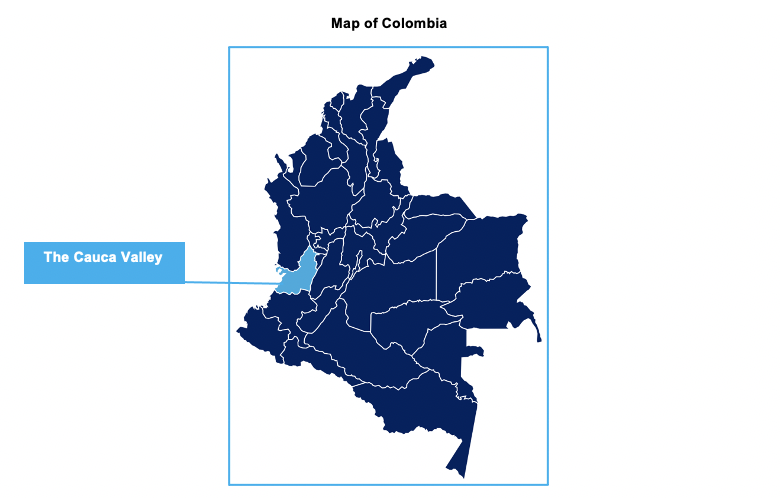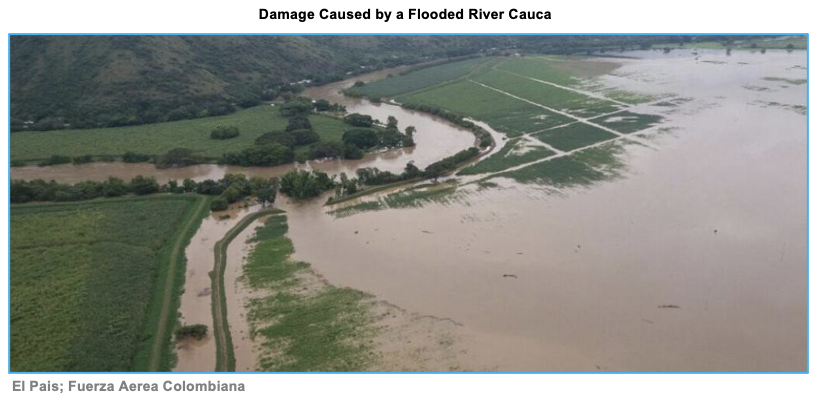- A fall in the temperature of the equatorial Eastern Pacific Ocean is called La Niña.
- The impact of this varies by location, but in Colombia, it increases the amount of rainfall received at the end of the year.
- Colombia’s cane harvest is year-round and higher rainfall can make it difficult for farmers to access cane fields.
La Niña Heightens the Risk of Cane Crop Losses in Colombia
- A La Niña will often increase Colombia’s rainfall at the end of the year.
- During the La Niña of 2010, the average weekly rainfall in October and December was 17% higher than the 10-year average.

- Excess rainfall limits the farmers’ ability to harvest their cane as the fields become too waterlogged to be worked on.

- In years when the La Niña has been particularly strong, Colombia’s monthly sugar production is typically 63k tonnes less than the 10-year average (119k tonnes vs. 182k tonnes).
How Bad Will This Year’s La Niña Be?
- A La Nina event has begun in 2020, so we are alert for possible cane harvesting disruption.
- Most of Colombia’s cane is grown in the Cauca Valley region.

- A more severe La Niña could cause the Cauca River to flood, which would certainly reduce field access and possibly also damage cane processing infrastructure.

- In an extreme event, extended periods of flooding could cause long-term damage to cane, or worse, kill it completely.
- As it stands, we maintain our view that Colombia will produce 2.1m tonnes of sugar in 2020.


Other Opinions & Interactive Data You Might Be Interested In…















